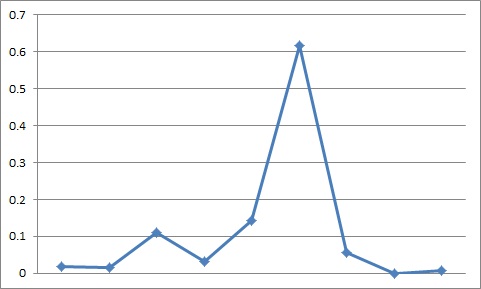I don’t know if this will work, but lets try.
The following graph represents a unique career statistic.
Which player? Which Stat? and What makes it unique?
Update:
Congrats to Josh who identified the stat and Ed who identified the player as Hal Lee. Lee is the only player since 1916 with at least 2500 PA with at least 50% coming from the 6th slot in the batting order.

